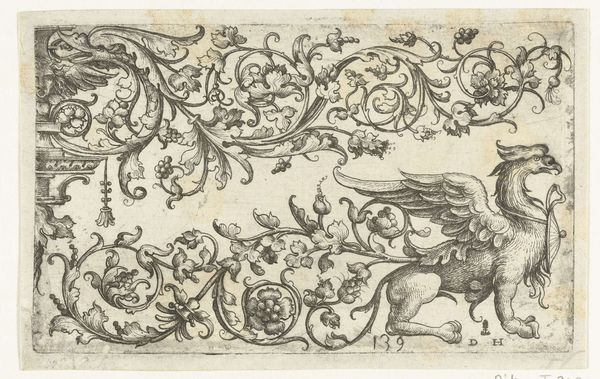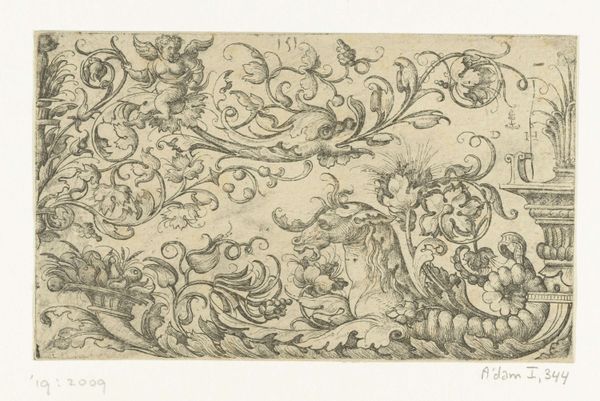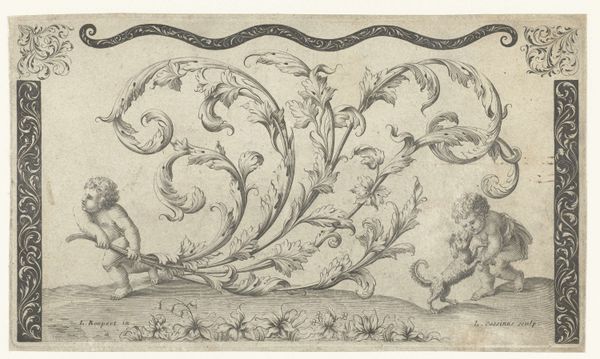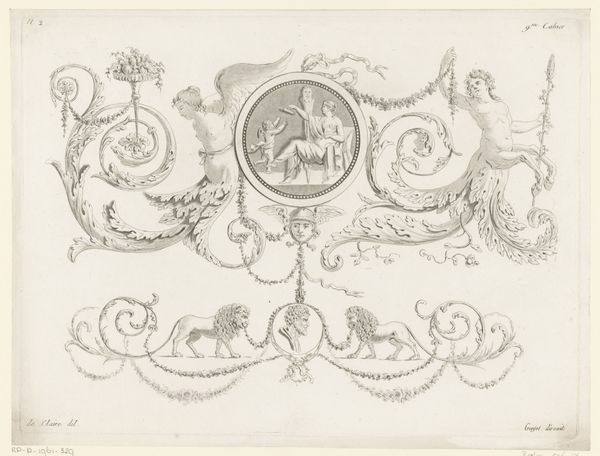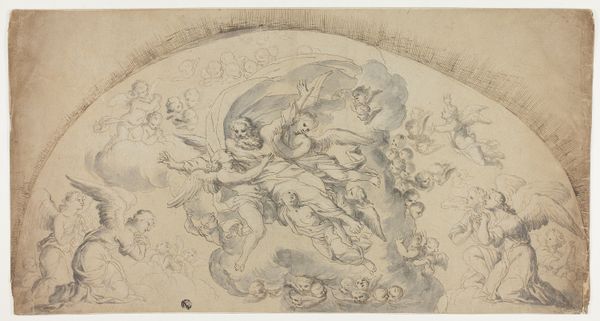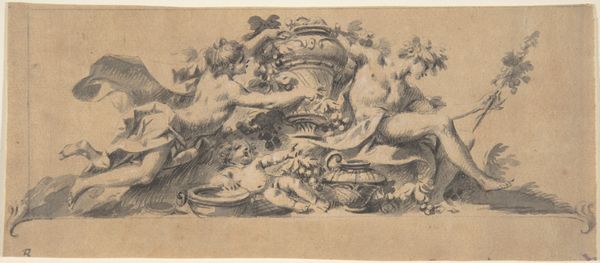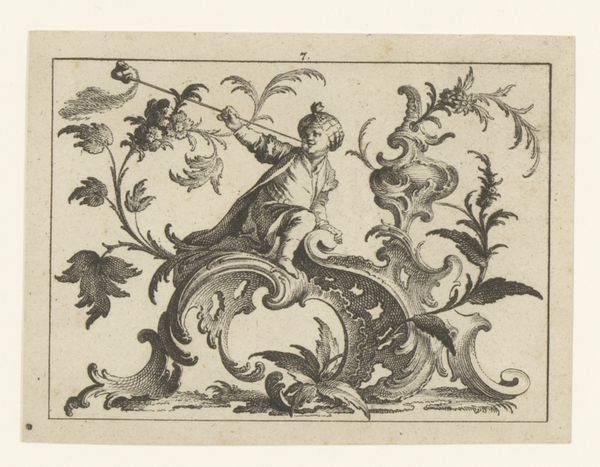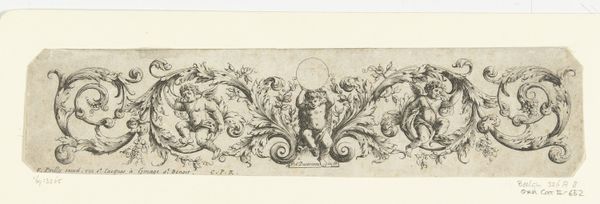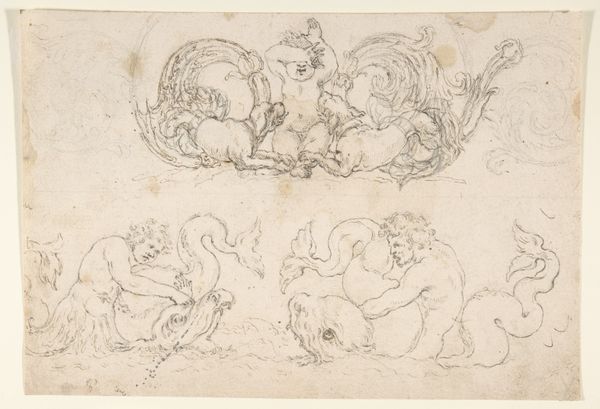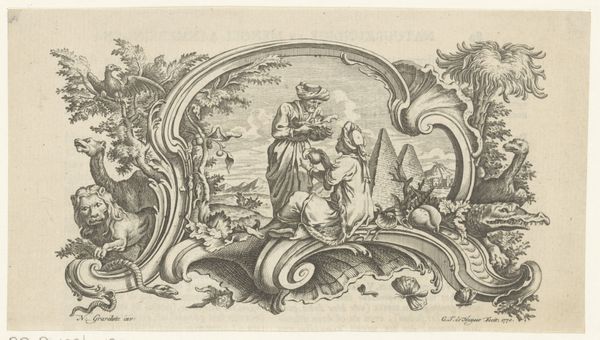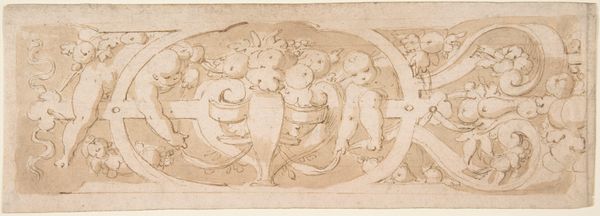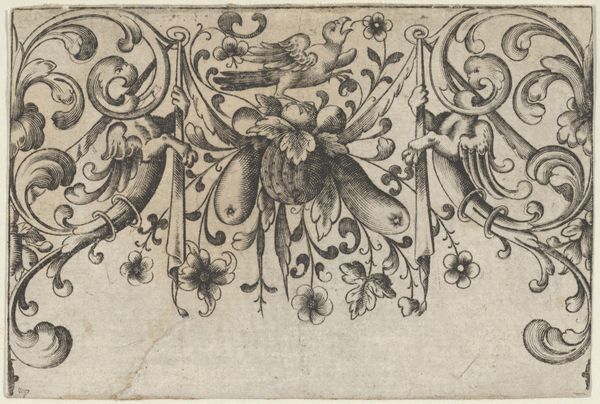
drawing, ornament, ink, engraving
#
drawing
#
ornament
#
allegory
#
baroque
#
figuration
#
ink
#
engraving
Dimensions: height 72 mm, width 153 mm
Copyright: Rijks Museum: Open Domain
Curator: Looking at this, I immediately sense a whimsical lightness, an almost ethereal quality achieved through delicate lines. Editor: That's a lovely observation. This ink and engraving drawing is entitled "Amor standing on a shell surrounded by ornament." It was created between 1683 and 1733 and is attributed to Bernard Picart. Curator: The depiction of Amor, the god of love, standing on a seashell feels loaded, a symbol of the commodification of desire within social hierarchies of that period. The ornamental details are, for me, somewhat gaudy and call attention to themes of excess that were symptomatic of the aristocracy. Editor: You make a great point regarding excess, and such ornamentation served very real functions, illustrating the wealth, taste and power of its patron, acting as a type of political propaganda. These objects reinforce established social narratives that can perpetuate inequalities and exclusion. Curator: Exactly. I'm intrigued by how Picart’s placement of Amor challenges traditional ideals. We might explore his potential subversion or endorsement of prevalent socio-economic norms through artistic choices, by centering questions about gender, social standing, and economic agency within this visual allegory of love. Is love truly available for everyone, or just the wealthy and powerful? Editor: That’s a pertinent inquiry, though keep in mind Picart was often commissioned by wealthy patrons, so while subversive readings are always possible, institutional support from dominant social players frequently dictated parameters for artistic production. The Rijksmuseum context is also meaningful because its collection practices influence public perception of this work by legitimizing the history represented by it. Curator: True, it calls us to reflect on who gets to shape and decide cultural representation, how institutional frameworks can sometimes skew inclusivity. How can we be certain of how diverse narratives get represented? Editor: Reflecting on these complexities is valuable because considering multiple viewpoints promotes better understanding and encourages more critical art appreciation today. Curator: Indeed, it reminds me that art is never truly separate from the broader forces and ideologies within which it emerged, which encourages dialogue across diverse contemporary lenses.
Comments
No comments
Be the first to comment and join the conversation on the ultimate creative platform.
